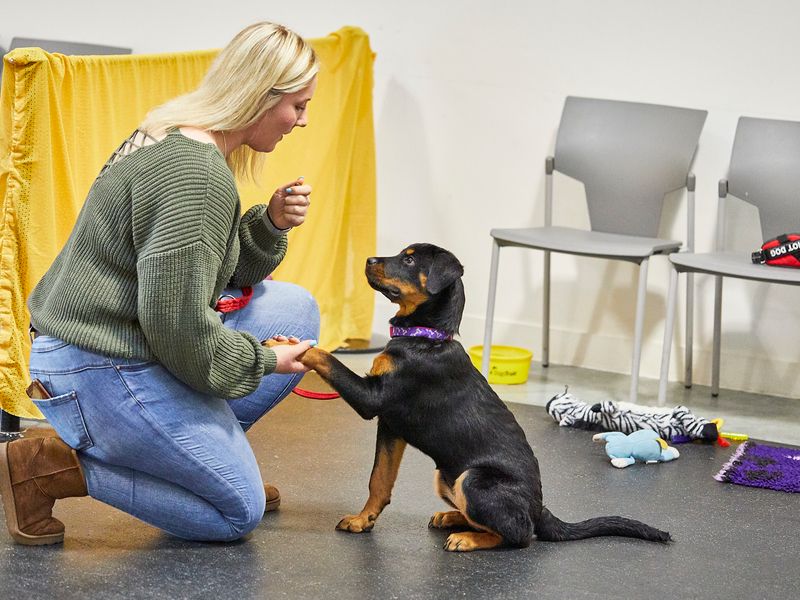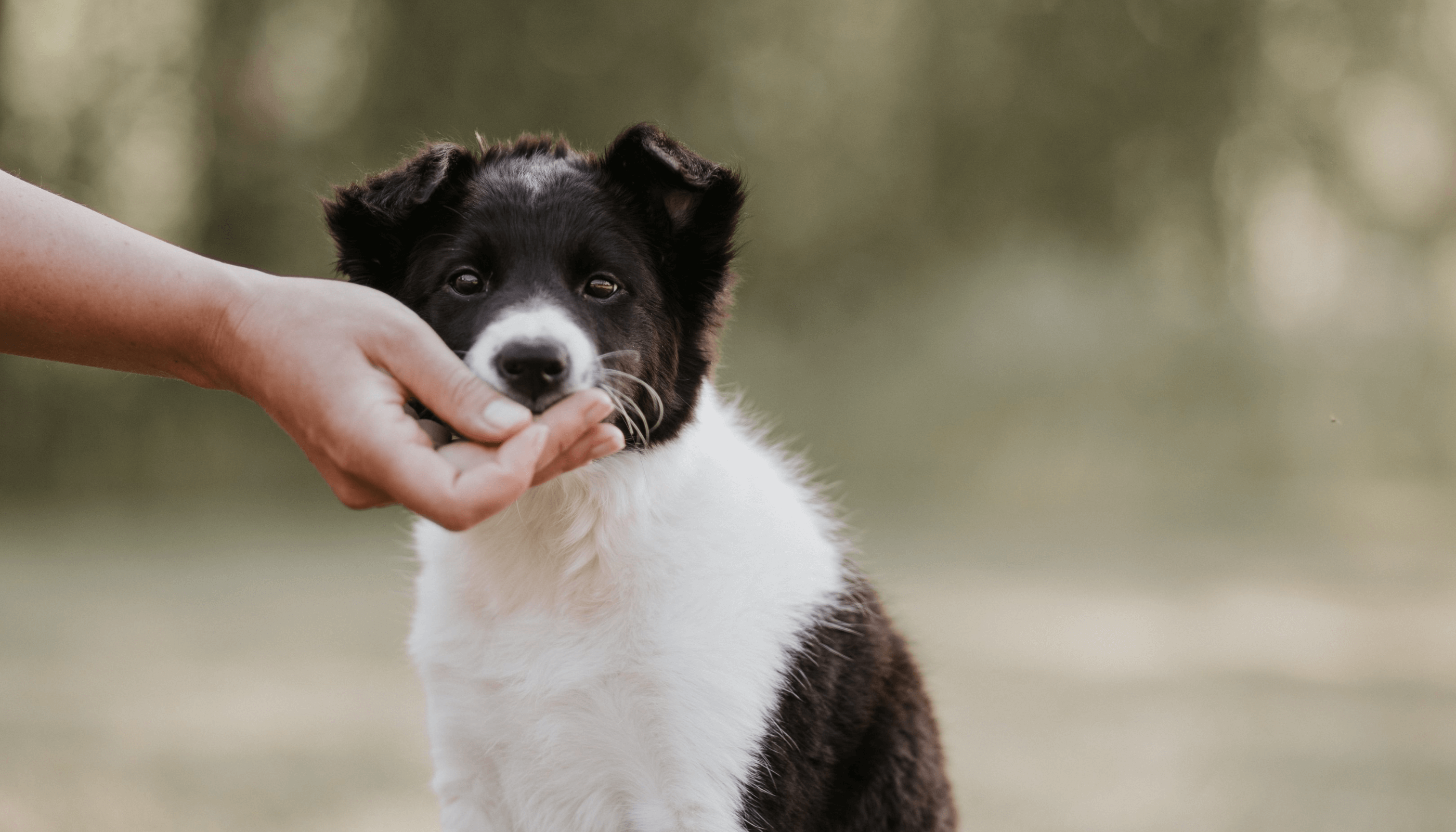Leading Pup Training Methods to Make Certain a Mannerly Animal
Efficient pup training is vital for cultivating a mannerly companion, and various methods can considerably influence a canine's development. As we explore these methods additionally, it comes to be clear that the success of puppy training hinges on a combination of techniques that can change your pet's behavior in remarkable ways.
Positive Reinforcement Techniques
Making use of positive support techniques is crucial for reliable young puppy training, as it encourages preferred behaviors through benefits as opposed to punishment. This method profits from the all-natural understanding procedures of pets, reinforcing etiquette by providing substantial and prompt benefits, such as deals with, appreciation, or playtime. By connecting favorable results with particular actions, pups are extra most likely to repeat those habits in the future.
Effective favorable reinforcement entails timing and uniformity. Rewards must be provided right away after the wanted actions strikes produce a clear link in the pup's mind. Additionally, differing the sorts of benefits can keep a pup's rate of interest and inspiration throughout the training procedure. As an example, some young puppies might react far better to verbal appreciation while others might prefer a favorite plaything or reward.

Uniformity in Training Commands
Maintaining consistency in training commands is essential for enhancing the lessons found out with favorable support strategies. Pets thrive on routine and predictability, so utilizing the very same spoken commands and hand signals for particular actions is crucial. This uniformity aids pups recognize what is expected of them, decreasing complication and aggravation for both the instructor and the animal.

Timing also plays a significant function in uniformity. Commands need to be delivered without delay during training sessions and complied with right away by positive reinforcement, such as deals with or praise. This instant feedback aids solidify the association between the command and the wanted behavior.
Including uniformity right into training sessions will certainly produce a steady discovering environment, advertising quicker proficiency of commands. Ultimately, a well-structured approach cultivates a solid bond between the pup and its proprietor, resulting in an extra well-behaved and loyal pet dog.
Socialization With Various Other Animals
Socialization with other pets is crucial for a pup's growth, as it assists them find out ideal habits and interaction abilities in varied social contexts. Very early interactions with various animals can considerably influence a pup's character and flexibility in different situations. When pups are subjected to a variety of animals, they come to be much more certain and less scared, which can stop prospective behavior concerns later in life.

Instruct your pup to recognize signals from various other family pets, such as indications of playfulness or discomfort, cultivating shared respect and understanding. Normal socialization not only enhances your young puppy's social abilities however likewise contributes to their total health, producing a more unified living atmosphere.
Cage Training Benefits
Acknowledging the numerous advantages of pet crate training can significantly enhance both the young puppy's and proprietor's experience. Crate training offers a secure and secure setting for puppies, guaranteeing they really feel safeguarded when left alone. This complacency can substantially decrease anxiety and stress levels for both the owner and the pet dog.
Furthermore, dog crates work as a valuable housebreaking tool. Young puppies normally prevent staining their resting location, consequently urging them to hold their bladder up until they are let outside. This instinct can quicken the housebreaking process, fostering excellent habits early on.
Crate training also aids in managing a young puppy's behavior when without supervision. By giving a marked area, owners can avoid harmful behaviors, such as eating on furniture or getting involved use this link in hazardous materials. Additionally, crates can be beneficial throughout traveling, offering an acquainted area that can help calm a pup in brand-new atmospheres.
Last but not least, establishing a crate routine motivates independence, enabling pups to learn how to be alone without concern. On the whole, cage training is an effective technique for advertising safety and security, technique, and serenity, resulting in a well-adjusted, well-behaved family pet.
Chain Training Basics
Leash training is a basic aspect of responsible pet ownership that guarantees a secure and delightful strolling experience for both the pup and its proprietor. Proper leash training starts early, preferably during the puppy's socializing duration. This training assists establish excellent habits and promotes positive behaviors when out in public.
To begin, select a comfy collar or harness that fits your young puppy well. Attach a sturdy chain, ensuring it is not too long, as you can check here this can bring about drawing and irregular actions. Beginning in a silent atmosphere to decrease distractions and slowly present your young puppy to brand-new environments.
Usage favorable reinforcement strategies, such as treats and praise, to encourage your young puppy to stroll close to you. If your puppy draws, stop walking and await them to go back to your side before continuing. This instructs them that drawing will not produce ahead movement. Consistency is key; technique regularly and continue to be patient, as proficiency takes time.
Additionally, incorporate brief training sessions with enjoyable diversions to build your young puppy's emphasis. With devotion and determination, chain training will result in a hospitable buddy, making strolls delightful for both the owner and the pup.
Final Thought
In final thought, using efficient pup training methods is crucial for creating a well-behaved pet dog. Positive reinforcement promotes trust and urges preferred actions, while consistency in commands aids in understanding. Socializing with other animals boosts versatility and social abilities, and crate training provides a protected setting that sustains housebreaking efforts. Chain training establishes appropriate walking practices, adding to satisfying trips. On the whole, these approaches jointly promote a harmonious relationship between young puppies and their owners.
As read this post here we explore these methods further, it ends up being clear that the success of young puppy training hinges on a combination of strategies that can change your pet's habits in remarkable ways.
Making use of favorable reinforcement techniques is important for effective pup training, as it motivates desired actions with rewards rather than penalty.Crate training additionally aids in managing a puppy's actions when not being watched.Leash training is an essential facet of accountable pet dog ownership that makes sure a delightful and safe walking experience for both the pup and its owner.In final thought, using effective puppy training strategies is important for developing a well-behaved family pet.
 Neve Campbell Then & Now!
Neve Campbell Then & Now! Alfonso Ribeiro Then & Now!
Alfonso Ribeiro Then & Now! Bradley Pierce Then & Now!
Bradley Pierce Then & Now! Rachael Leigh Cook Then & Now!
Rachael Leigh Cook Then & Now! Pierce Brosnan Then & Now!
Pierce Brosnan Then & Now!